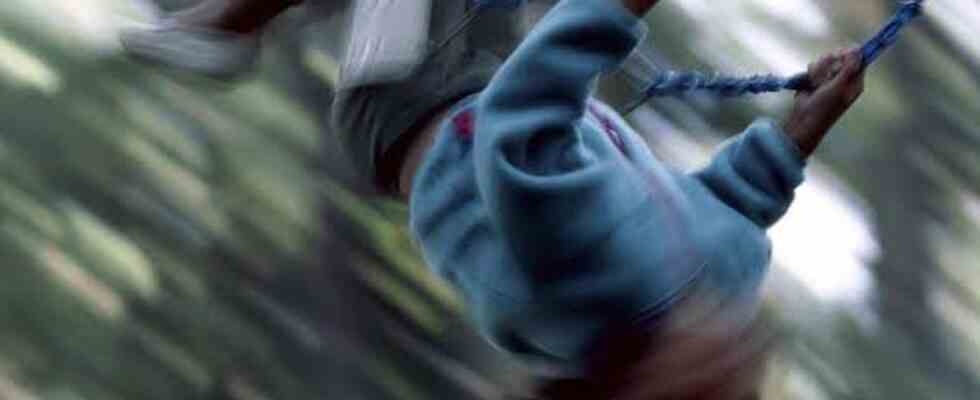Swinging in Marseille, 9-year-old Lola would love to. Except that finding a swing in the playgrounds of the city center is an almost impossible mission. “I share the same observation, when we arrived from Barcelona to live here, my daughter pointed it out to me too,” says anthropologist Nadja Monnet, researcher at the laboratory architecture city urbanism of the CNRS. As children, we all loved to swing, to experience strong sensations, to feel weightless, to fall sometimes but to get up and get back on it. »
Why such an absence from the urban landscape when, she recalls, “swings were the key elements of playgrounds designed from the end of the 19th century, along with seesaws, slides and squirrel cages? »? His hypothesis is that of a serious accident that occurred in the 1990s in Paris, followed by a lawsuit lost by the town hall which would have “triggered the removal of swings” in cascade. “It’s a general trend,” says Patrice Cattaui, president of Créativ’Innonation Aménagement, a Marseille-based company that creates play and leisure areas suitable for children.
More inclusive bird nests
“Until the 1990s, he continues, the games that could be found were mainly made by the technical services of the municipalities, moreover in Marseille some cabins were made by the carpentry service of the city. Then national and then European standards appeared for equipment and floors. And the games had to meet the same standards for entanglement of anorak, finger or head cords. “The swing gates must respect a much greater safety distance and be installed at a corner of the playground to avoid interaction between passing children and users,” he adds.
Safety issues also come up against a more accounting logic, often linked to fewer staff for maintenance in the technical services, but not only. “The swing frame concerns few child players for a significant investment, despite the fact that today the trend is for a bird’s nest to swing collectively”, advances Patrice Cattaui. He thus observes a lower demand for gantries. For the benefit therefore of more inclusive bird’s nests but also of “trampolines, water games, innovative floor coverings, zip lines and giant structures, which are increasingly being installed. »
In terms of materials, he observes a return to “wooden games with a natural look, unstructured as if the children had made the games themselves, the new area of La Plaine in Marseille is in this spirit. “Not enough to really reassure the director Valérie Simonet, whose last documentary, Citizen Kids, invites you to look at the city through the eyes of children, to better change it. “The history of playgrounds is one of the very important aspects that testify to the place of children in the city,” she says. Basically, for me, the problem is not so much seesaw or no seesaw, but the normative side. All playgrounds in France are the same, chosen from a catalogue. They are closed not for the children, it is not them who are at the center of the concerns, but to reassure the parents. »
“We must break down the stereotypes of adults”
“The city is no longer a playground for children today, deplores Valérie Simonet. We have to break down the stereotypes that adults have in their heads, which think that children play where there are games. You just have to create the conditions for play in the public space. In Marseille, the Prado beaches where families can picnic, where the playgrounds are not fenced, where there are mounds for rolling , is one of the few successful developments. Thinking, with us, is at zero point. “The smaller the town hall, on a human scale, the more consultation we have between the citizens”, observes Patrice Cattaui, for whom “there are still mayors who do not consult and carry out very classic games. He thus invites the involvement of municipal children’s councils.
Called upon on the subject of swings, and more broadly on the development of play areas, the city of Marseille simply lets it be known that it is “working to improve them”. How? With what criteria, budget and timetable? No communication at this time. From Wednesday to Friday, Aix-Marseille University, for its part, welcomes study days co-organized by Nadja Monnet, on the theme “A place for children? Transformations of urban games devices”. In her research on the swing, the researcher spotted a new installation: “Curiously, at La Castellane, they have just put some back in the park. There are two for 1,500 neighborhood children. And they weren’t damaged, which is sometimes the fear. »

